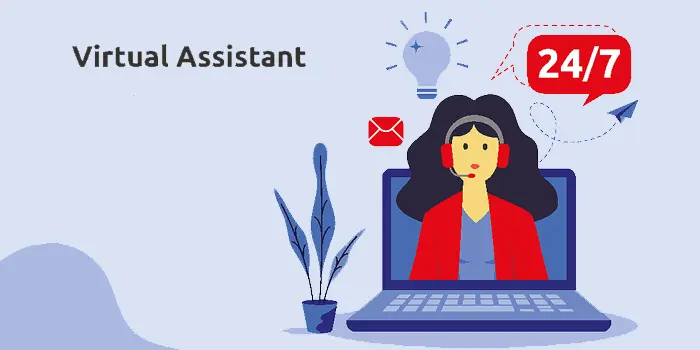AI Glossary
Virtual Assistant – Short Explanation
A virtual assistant is an AI-powered software agent designed to perform tasks or services based on voice commands or text inputs. Commonly found in smartphones, smart speakers, and IoT devices, assistants like Siri, Alexa, and Google Assistant help users manage calendars, control smart home devices, retrieve information, and more. These systems rely on natural language processing and large volumes of annotated voice and text data to understand and respond to user intent.

Table of Contents
Virtual Assistant in the Real World
Virtual assistants use the internet and massive amounts of data. They respond to specific “wake” words to understand when they need to take action. Based on the user’s requests, the preprogrammed scripts retrieve the relevant information from online sources, such as finding out the weather or checking calendars for activities.
Alternatively, these smart assistants take action by interacting with other intelligent devices in the home. These actions could include changing the temperature, turning on or off lighting, unlocking doors, and even changing the television channels. Added to these capabilities, newer smart assistants can make and receive calls and even interact with real humans to make reservations.
As virtual assistants are always “on,” they require an alert word to know they are being called. However, this feature raises some significant privacy concerns about virtual assistants. Because they have information about search histories, control over devices in the home, and access to a user’s email and calendar, there is very little information inaccessible.
Text annotation for machine learning is a critical process that transforms unstructured text into labeled data, enabling algorithms to understand and make predictions from textual information. By annotating elements like entities, sentiments, or classifications, this process equips machine learning models to comprehend complex language structures and apply them effectively in natural language processing (NLP) tasks. As machine learning continues to evolve, text annotation serves as a foundational step in building intelligent systems capable of interpreting human language.
Tip:
Training virtual assistants to understand human intent across accents, dialects, and languages requires high-quality, diverse datasets.
LXT provides multilingual voice and audio datasets at scale, enhanced with expert audio annotation and domain-specific customization.
Whether you’re building voice interfaces for consumer tech or enterprise tools, LXT ensures your virtual assistant is equipped to understand and serve a global user base.
Virtual Assistant in the World of AI
Virtual Assistants are classified in the world of AI as weak AI. This is due to the fact that they have particular functions and capabilities available to them. On the other hand, strong AI is much closer to a human in terms of ability and can also learn and grow to expand further.
Virtual assistants continue to grow and evolve over time. While Siri was the first commercially available virtual assistant, it has, in recent years, started to lag behind Google Assistant and others in terms of natural language abilities. Google Assistant as an open platform integrates with a host of other technologies and platforms, including Apple devices.
Virtual assistants are becoming more and more mainstream; however, we are only beginning to explore their capabilities. New integrations from Google Assistant allow the assistant to make flexible appointments with little to no manual intervention required. New devices and machines are being built and released with voice control capabilities integrated in. This will let manufacturing and office staff have voice control similar to what we’ve already experienced in the home. This ability will only become more valuable when extended to other time-consuming administrative tasks, further improving their value.
